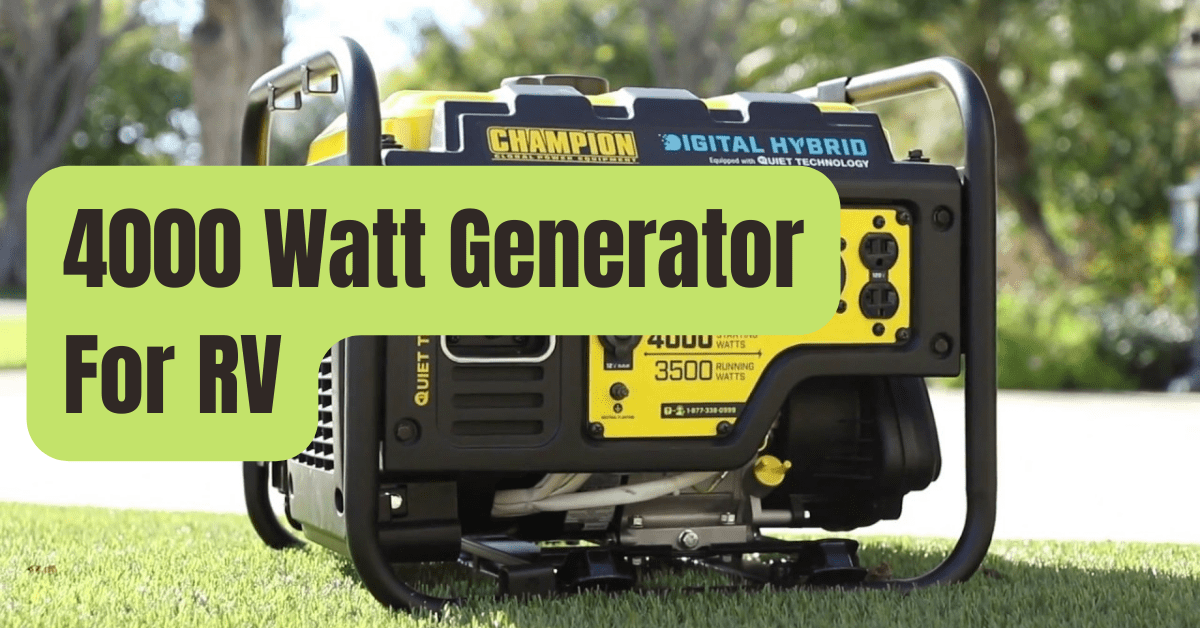When the electricity goes out or you’re going on a road trip or camping excursion, having a generator on hand might make all the difference.
The finest 4000-watt generator provides enough power to keep your vital appliances operating during a power outage, such as your refrigerator, freezer, water pumps, and lights, without being unduly huge, heavy, or gas-guzzling.
4,000 watts, on the other hand, is an ideal quantity for powering a medium-sized RV or even electrifying a campground.
We looked at a variety of factors in order to determine the finest 4000-watt generators on the market today.
First, we determined if the 4000-watt rating refers to continuous power, or the greatest wattage the generator can consistently generate, or surge power, which the generator can only maintain for a few seconds when motorized appliances begin to operate.
We also took into account the amount of time each generator can operate based on the size and efficiency of its fuel tank.
When researching the finest 4000-watt generators for RVs and camping, the amount of noise they make was a key factor to consider.
Finally, we looked at how various generator warranties stacked up.
We spent tens of hours studying through technical parameters and reviewing customer reviews to find the most popular 4000-watt generators.
As a consequence, we’ve selected the top seven 4000-watt generators, which are included in the table below.
Continue reading for in-depth assessments of each generator, including advantages and disadvantages.
Our shopping guide will teach you all you need to know about selecting the best generator for your requirements.
Finally, we’ll go through our top three 4000-watt generators.
Review of the Top Seven 4000-Watt Generators in 2025
#1. Westinghouse iGen4500

Features
- Engine: 224cc OHV 4-stroke
- Rated/peak output: 3700W/4500W
- Fuel tank capacity: 3.4 gal
- 1/4 runtime: 18h
- Outlets: 120V 30A (TT-30R), Duplex 120V 20A (5-20R), (2) 5V USB ports
- Noise level: 52 dBA
- Warranty: 3-year limited or 1000h (residential), 1-year limited or 1000h (commercial)
More features: LCD display, EPA and CARB compliant, inverter generator, remote, electric and recoil start
This Westinghouse powerhouse generator is incredibly well-equipped for any application, but expect to pay a premium for the extensive list of incorporated features.
The generator has a steady power output of 3700 watts and a surge power output of 4500 watts, a large enough difference to safely start motor-driven appliances without removing anything else from the generator.
The four-stroke engine enables this generator to be very fuel efficient; it can operate for up to 18 hours on only 3.4 gallons of gasoline.
The quietness of this generator astounded users.
It is not only the quietest generator we tested, but it is also more than 10 decibels quieter than the industry average for generators of this size.
Users praised the generator’s electric and recoil start options, which provide a backup in case the generator’s battery runs out.
Two 120V household outlets, a 30A outlet, a 12V DC outlet, and two USB connections for charging small gadgets are located on the generator’s face.
The lack of an RV-ready outlet, though, is the generator’s most significant flaw.
The LED display, which shows how many watts are being taken from the unit and how much runtime is remaining depending on fuel use, was praised by users.
For residential users, Westinghouse provides a three-year guarantee, however commercial customers should be aware that they will only get a one-year warranty.
What makes it unique?
- With an 18-hour runtime, it is fuel efficient.
- At just 52 decibels, it is very quiet.
- Start using an electric or recoil starter.
- Display with LEDs
- Ability to work in parallel
What are the shortcomings in the design?
- There isn’t an RV-ready outlet.
- On the heavier side of things
#2. Champion Power Equipment 100302

Features
- Engine: 224cc Champion OHV
- Rated/peak output: 3500W/4000W
- Fuel tank capacity: 2.9 gal
- 1/4 load runtime: 17h
- Outlets: 120V 30A (TT-30R), 120V 20A Duplex (5-20R), 12V DC Automotive
- Noise level: 64 dBA
- Warranty: 3-year limited
More features include parallel compatibility, recoil start, RV compatibility, inverter generator, and CARB compliance.
This low-cost Champion generator is an all-around performer that can be used at home to provide electricity during a power outage or in your RV on a daily basis.
The generator has a steady power output of 3500 watts and a surge power output of 4000 watts, which means you could have trouble starting motor-driven appliances if you run it at full power.
Users were particularly pleased with the generator’s clean electrical waveform, which enables it to be used securely for powering and charging delicate gadgets.
Although there are just two 120V home outlets on the generator, RV owners enjoyed the RV-ready twist-lock outlet and the 12V DC battery charging outlet in case the RV’s battery failed.
At half-load, the generator is exceptionally fuel efficient, lasting up to 17 hours on less than three gallons of gas.
However, customers report that the generator, at 64 decibels, is a little loud for late-night or early-morning usage, particularly at a camping.
Many consumers also yearned for an electrical start option, despite the fact that they considered the recoil start to be quick and dependable.
The generator comes with a three-year limited guarantee from Champion, yet customers have experienced no problems with it during that period.
Why are we so taken aback?
- Twist lock outlet for RVs
- With a 17-hour duration, it saves you money on gas.
- Electrical waveform that is free of contaminants
- Warrant for three years
What drawbacks should you be aware of?
- There are just two 120V outlets.
- At 64 decibels, it’s rather loud.
- Surge power is just 4000 watts.
#3. Pulsar PG4000iSR

Features
- Engine: 224cc OHV
- Rated/peak output: 3500W/4000W
- Fuel tank capacity: 3.4 gal
- 1/2 runtime: 15h
- Outlets: (2) AC 120V, 30A RV, 12V DC 8A, 5V DC USB
- Noise level: 63 dBA
- Warranty: 2-year
More features: Inverter generator, parallel capability, telescopic handle, remote control push start, CARB compliance are some of the other features.
This Pulsar tiny generator has a somewhat different design than the others we’ve looked at, with a single handle bar across the top and integrated plastic wheels rather than a complete metal frame.
This, along with the telescopic handle, makes this generator one of the most portable 4000-watt generators on the market.
The generator features a 224cc engine, however it only produces 4000 watts of surge power and 3500 watts of continuous power, so it’s not suitable for powering many motorized equipment.
The fuel economy and runtime are average, with the generator using 3.4 gallons of gas to operate at half load for 15 hours.
Although the noise level is not excessive, at just 63 decibels, several customers complained that the generator created a lot of unpleasant whining sounds when used at close to its maximum power.
Users liked the electric start, and the option to start the generator remotely with the supplied controller was a big hit.
With an RV-ready twist-lock outlet and a USB connector for charging small gadgets, the outlet panel is quite well-equipped.
This generator also features a 12V DC outlet for charging batteries, which, when paired with its mobility, makes it a viable option for usage in an RV or on road trips.
It is worth noting, however, that it only has two conventional 120V outlets.
This generator comes with a two-year guarantee from Pulsar, and customers report that most hardware stores and repair shops have components for this model.
What makes it unique?
- With a telescopic handle, it’s very portable.
- Remote-controlled electric start
- 12V DC outlet, RV outlet, and USB port
- Ability to work in parallel
What are the shortcomings in the design?
- Surge power of just 4000-watts
- When approaching capacity, it makes a whining noise.
- There are just two 120V outlets.
#4. Westinghouse iPro4200
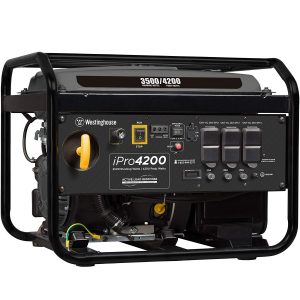
Features
- Engine: 212cc OHV 4-stroke
- Rated/peak output: 3500W/4200W
- Fuel tank capacity: 2.6 gal
- 1/2 runtime: 15h
- Outlets: (3) Duplex 120V 20A GFCI (5-20R), (2) 5V USB ports
- Noise level: 52–59 dBA
- Warranty: 3-year limited or 1000h (residential), 1-year limited or 1000h (commercial)
More features include a recoil start inverter generator, OSHA compliance, EPA and CARB compliance, and a GFCI protected control panel.
This Westinghouse generator comes with six 120V household outlets and two USB charging connections, making it perfect for usage at home during a power outage when you need as many outlets as possible.
It does not, however, come with a 30A outlet, a 12V DC outlet, or an RV-ready outlet, as do most other generators, and hence has a restricted range of applications.
This generator has a constant power rating of 3500 watts and a surge power rating of 4200 watts, so it has enough energy to cover all of the critical appliances in your house in the case of a power outage.
Even better, at half load, the generator is incredibly fuel efficient, requiring just 2.6 gallons of petrol to operate for up to 15 hours.
Users particularly praised the generator’s quiet operation, which ranges from 52 to 59 decibels depending on the power consumption.
Because of the low noise level, it might be used overnight in certain instances without disturbing the home or neighbors.
One of the most common requests from consumers is for the generator to have an electric start.
Users, on the other hand, praised the LED screen, which displays the wattage pulled from the generator as well as the remaining duration.
For domestic users, Westinghouse provides a three-year guarantee, while for commercial customers, the warranty is just one year.
What distinguishes it?
- Two USB ports and six 120V outlets
- Quiet, with a noise level of less than 59 decibels.
- Extremely low fuel consumption
Which drawbacks should you be aware of?
- There are no 30A, 12V, or RV-ready outlets available.
- There is no electric start.
#5. WEN 56475
Features
- Engine: 223cc OHV
- Rated/peak output: 3750W/4750W
- Fuel tank capacity: 4 gal
- 1/2 runtime: 10h
- Outlets: (2) 120V receptacles (5-20R), 30-amp 3-prong receptacle (L5-30), 120V RV receptacle (TT-30R)
- Noise level: 68 dBA
- Warranty: 2-year
More features: Electric start, CARB & EPA III compliance
If you need to push the limits of what a generator in this size class can give, this heavy-duty generator from Wen is ideal for residential usage.
The generator has a continuous power rating of 3750 watts, but a surge power rating of 4750 watts, which is the most of any 4000-watt generator we tested.
All of this power, however, comes at a cost: the generator’s fuel efficiency is low, and it can burn through its entire four-gallon fuel tank in just ten hours at half load.
The electric start on this generator was praised by users for making it simple to start the generator even when it was chilly.
Although the face of the generator has a 120V RV-ready twist-lock outlet, the frame of the generator may or may not be suitable for an RV, depending on the size of your vehicle.
On one side, the built-in wheels make the generator more portable for wheeling about camp, but they also increase the unit’s size and mass.
There are only two standard 120V outlets on the generator, and there is no 12V DC outlet for charging a battery.
Despite the fact that the generator is CARB and EPA approved for minimal emissions, customers have remarked that it is unusually noisy when compared to other generators of similar size — it generates 68 dB of noise while working, which might create complaints if used outside a campground at night.
This generator comes with a two-year guarantee from Wen.
What made it to our list?
- 4750-watt surge power
- 120V RV-ready twist-lock outlet
- The frame comes with wheels.
- Start with an electric motor
What about it isn’t ideal?
- There is no 12V DC outlet.
- At 68 decibels, it’s rather loud.
- The vehicle is gas-guzzling and has a 10-hour runtime.
#6. XtremepowerUS 4000-Watt Gasoline Generator

Features
- Engine: 212cc 4-Stroke OHV 1-Cylinder
- Rated/peak output: 3500W/4000W
- Fuel tank capacity: 4 gal
- 1/2 runtime: 10h
- Outlets: (1) 120V AC Twist-Lock, (2) 120V 20A AC
- Noise level: 67 dBA
- Warranty: not specified
More features: Recoil start, engine shutdown switch, volt meter, and circuit breakers are among the other features.
This XtremepowerUS gasoline generator is a powerful machine.
It boasts a 212cc engine that will meet all of your requirements.
It’s been thoughtfully engineered to provide not just dependable power but also a high degree of use.
Despite its enormous output, the generator is remarkably lightweight.
It is light in weight and features broad handles.
It shouldn’t be too difficult to set it where you need it for two people.
One of the most significant disadvantages of portable generators is that they may be quite noisy.
While all generators generate a lot of noise, this one is a little quieter.
With a volume of 67dB, you won’t have to worry about drowning out other sounds or having to yell over them.
It isn’t the most powerful generator on the market, but it’s ideal for camping, construction sites, tailgates, and parties.
Although a few users have reported delivery issues, this does not appear to be a widespread problem.
This model has a superb recoil start that makes it extremely simple to get started.
It needs very less work in comparison to other generators on the market.
All of this is available for a very reasonable price, making it superb value for money.
What distinguishes it?
- It’s simple to relocate
- Not too obnoxious
- To begin, it is simple.
- Exceptional value
Which drawbacks should you be aware of?
- Issues with delivery
- Reduced power output
#7. DuroStar DS4000S

Features
- Engine: air cooled OHV 4-stroke
- Rated/peak output: 3300W/4000W
- Fuel tank capacity: 4 gal
- 1/2 runtime: 8h
- Outlets: (2) 120V, 20-amp, 3-prong; (1) 120V, 30-amp twist-lock
- Noise level: 69 dBA
- Warranty: 1-year limited
More features: EPA-approved recoil start
This DuroStar generator is an excellent solution for individuals who need a generator on a budget or who want a generator for a future emergency but don’t want to spend a lot of money on something they won’t use very often.
The four-stroke engine produces 3300 watts of steady power but up to 4000 watts of burst power.
Despite the fact that four-stroke engines are typically more fuel efficient, this generator is a gas guzzler, burning through its four-gallon tank in just eight hours at half load.
The outlet panel is well-equipped, with two 120V household outlets and a 30A twist-lock outlet for tools that require a higher current.
The panel also includes an analog display that shows the current wattage, though it can be difficult to read.
Users warn that this generator, which is rated for 69 decibels of noise, can be quite loud.
Given the low price, most users were satisfied with the recoil start and were unsurprised by the absence of an electric push start.
The warranty on this generator is also short, at only one year, which is understandable given the price.
However, after several years of intermittent use, users discovered that it continued to work well.
What makes it unique?
- A twist-lock outlet with a capacity of 30 amps is included.
- Wattage may be read on an analog display.
- Inexpensive
What are the shortcomings in the design?
- At 69 decibels, it’s rather loud.
- Fuel consumption is inefficient, and the runtime is just eight hours.
- One-year limited warranty
Consider the Following:
How do you choose the right 4000-watt generator for your needs now that you’ve learned more about our seven favorite 4000-watt generators on the market? The best generator for you will be determined by how you intend to use it, which will influence the features you require, as well as your budget.
In this buying guide, we’ll go over the basics of what a 4000-watt generator can power, as well as the key features you should be aware of in order to make the best choice.
With A 4000-Watt Generator, What Can You Power?
You’ll need to add up the wattages of all the appliances you plan to plug into your 4000-watt generator to figure out how much power you’ll be drawing from it.
However, there is a catch: any motor-driven appliance, such as your refrigerator, freezer, or air conditioner, has two different wattage requirements: running wattage and surge wattage.
The amount of watts required to keep the appliance running after it has begun is referred to as running wattage.
Surge wattage is typically higher, and in some cases much higher, and refers to the amount of wattage used by the appliance for the first few seconds after the motor starts up.
As a result, you must ensure that the total running wattage of all the appliances you want to power with your 4000-watt generator is less than 4000 watts, and that the total surge wattage plus the running wattage of non-motorized appliances is less than the surge wattage that your generator is rated for.
Let’s take a look at some of the common appliances found in a house or RV as an example of what a 4000-watt generator can power.
With 4000 watts of power, you can run a refrigerator and freezer, microwave, and air conditioner, with only a few hundred watts left over for lighting and charging small electronics.
However, because these appliances are powered by motors, the surge wattage required to run them is closer to 5000 watts.
Before You Buy A 4000-Watt Generator, There Are A Few Things To Think About.
There are a number of important features on generators that you should be aware of in order to select the best 4000-watt generator for your needs.
These features affect how the generator performs under various conditions.
We’ll go over these features, what they mean, and how they can affect your buying decision in this section.
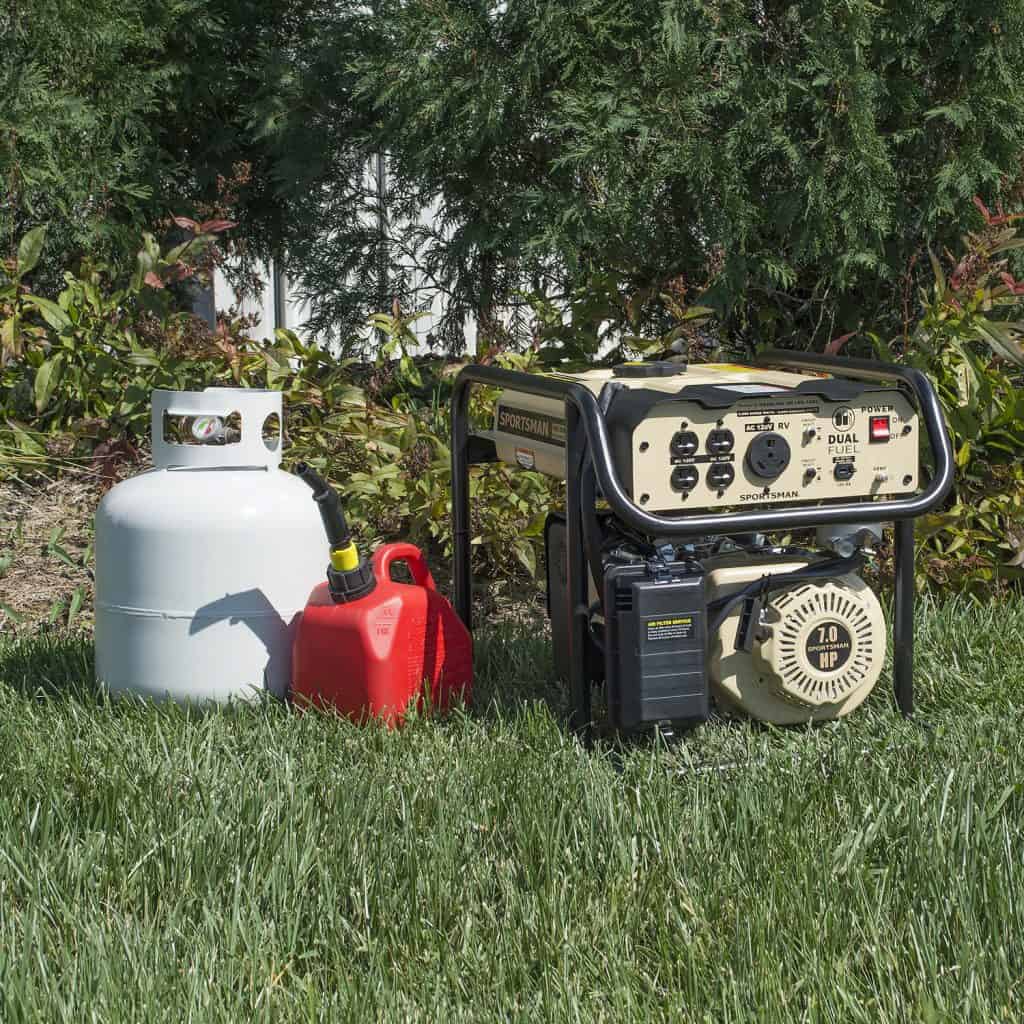
#1. Maximum And Rated Power Output
All current generators have two power outputs: rated power and maximum output, often known as surge power.
The rated power is the wattage that the generator can reliably put out for as long as it has fuel, and it is the wattage that you cannot surpass once all of your appliances are up and running.
The running wattage is the only wattage that counts for non-motorized appliances like light bulbs, dishwashers, and even microwaves, and you can figure out how much wattage your appliances will need by adding up all of their separate running wattages.
It’s worth noting that all of the 4000-watt generators we looked at had rated wattages under 4000.
When you’re running motorized equipment like refrigerators, freezers, air conditioners, and certain pumps, the maximum power output comes into play.
The motor takes far more power to start up when these appliances are initially hooked into the generator than it does to operate after it has started.
For a few seconds, your generator’s full power output will be able to manage this additional wattage need, long enough to start these items.
If you included in some wiggle room when estimating your operating power requirements, your generator should be able to start all of your appliances as well.
#2. Engine
The engine is the component of your generator that converts fuel – either gasoline or propane – into electrical energy, and it is the heart of your generator.
In general, a larger engine produces more power, so generators with roughly equivalent output wattages have engines that are roughly the same size – this is why the majority of the 4000-watt generators we tested have 212cc or 224cc engines.

#3. Capacity Of The Fuel Tank
All of the 4000-watt generators we looked at run solely on gasoline and have an internal fuel tank to store the fuel.
The fuel tank size on these generators is typically 3.4 to 4 gallons and does not vary much.
The Westinghouse iPro4200, on the other hand, has a small 2.6-gallon fuel tank, which reduces the overall size of the generator but also reduces runtime and necessitates more frequent fuel tank refilling.
In general, a bigger fuel tank will extend the generator’s runtime – though this is dependent on fuel efficiency – and increase the generator’s size.
#4. Runtime
The runtime of a generator is normally assessed at half-load (when the generator is producing half of its rated wattage) and is a measurement of how long the generator can operate on a single tank of fuel.
The amount of time the generator can operate is determined by the size of the fuel tank and the efficiency of the generator’s engine.
The DuroStar generator has an eight-hour runtime at half load, whereas the Westinghouse iGen4500 generator has a remarkable 18-hour runtime at half load.
It’s worth noting that the generator’s fuel efficiency is heavily influenced by the amount of power it generates.
When a single generator is operated at full capacity, the runtime is reduced compared to when just a single appliance is hooked in.
#5. Outlets
The number and kind of outlets on your generator are critical because they dictate what sorts of equipment you can plug in and how many you can plug in without using power strips or electrical converters.
The number of conventional 120V outlets on a generator may vary from two on the DuroStar and Pulsar generators to six on the Westinghouse iPro4200 generator.
If you intend to use your generator to power heavy tools, you should look for one with a 120V/240V 30A twist-lock outlet.
If you want to use your generator to power an RV, on the other hand, an RV-ready 120V outlet, such as the ones found on Wen generators, may be the most important outlet to have.
In addition, some generators, such as those from Westinghouse and Pulsar, have USB ports for charging small electronics.
Another useful outlet is a 12V DC outlet, such as the one found on the Champion generator, which can be used to charge a battery for your car, RV, or boat.
#6. The Degree Of Noise
While power is important when looking at generators, it’s also important to consider how much noise a generator will make once it’s turned on.
If you want to use your generator to power an RV or go camping, noise is a major consideration.
A loud generator’s noise can wake up an entire campsite or keep you awake at night.
A loud generator, even for home use, can keep you or your neighbors awake at night and cause complaints.
In general, generators with larger engines produce more noise, though the amount of noise reduction built into the generator by the manufacturer can also play a significant role in noise.
The Westinghouse generators, for example, make only 52 decibels of noise, whereas the DuroStar and XtremepowerUS 4000-Watt Gasoline Generator generators make 67-69 decibels of noise.
#7. Size, Weight, And Portability Are All Factors To Consider.
Depending on where you plan to store it and how you plan to use it, the size, weight, and portability of different generator models can matter more or less.
Portability may not be an issue for occasional household use where the generator sits in the same location where you expect to use it.
Having an enormous and heavy generator, on the other hand, can be problematic if you plan to use your generator with an RV for camping.
Thankfully, while 4000-watt generators are large and difficult to transport on your own, they are generally smaller than larger generators.
The Wen, Pulsar, and Westinghouse iGen4500 generators are mounted on wheels to make them easier to move around if portability is a concern.
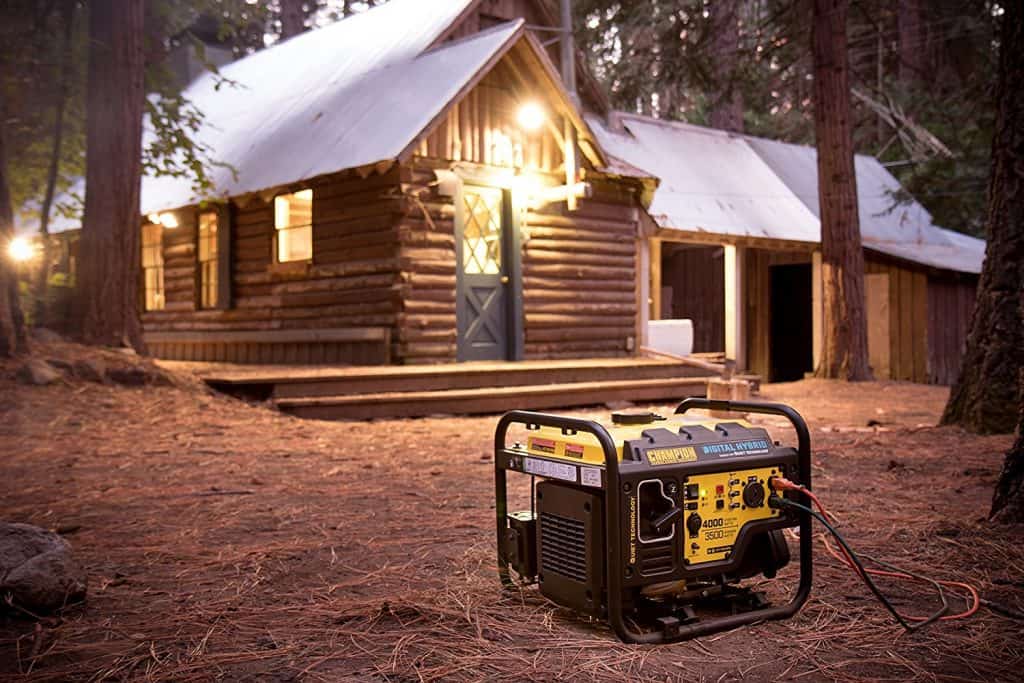
#8. Warranty
Because a 4000-watt generator is such a large investment, you want to be confident that it will perform as well as new for many years to come.
A manufacturer’s warranty may cover your purchase in the event that anything goes wrong with it, as well as provide you piece of mind.
The DuroStar generator has a one-year warranty, whereas both Westinghouse and Champion generators have three-year warranties.
Prices
What should you expect to pay for a 4000-watt generator? The price of these units varies greatly, but you should budget at least several hundred dollars for a reliable unit.
When shopping for a generator, choose the most reliable model with the surge power and features you require – it’s better to pay a little more now than to have to replace it in a few years.
Tips
How do you connect your new generator once you have it? Here are a few of our favorite pointers to get you started using your generator.
- Never use the generator inside or in enclosed areas for safety reasons.
- It’s illegal to try to backfeed electricity directly into your home’s electrical grid, so use the generator instead.
- Allow for complete cooling of the generator before adding more fuel to the reservoir.
- In addition to gasoline, keep enough motor oil and filters on hand to get you through an extended power outage.
- Allowing the generator to run out of gas completely can damage the engine.
- After you’ve finished using the generator, never leave the gas in it because it can go stale and cause engine damage the next time you start it up.
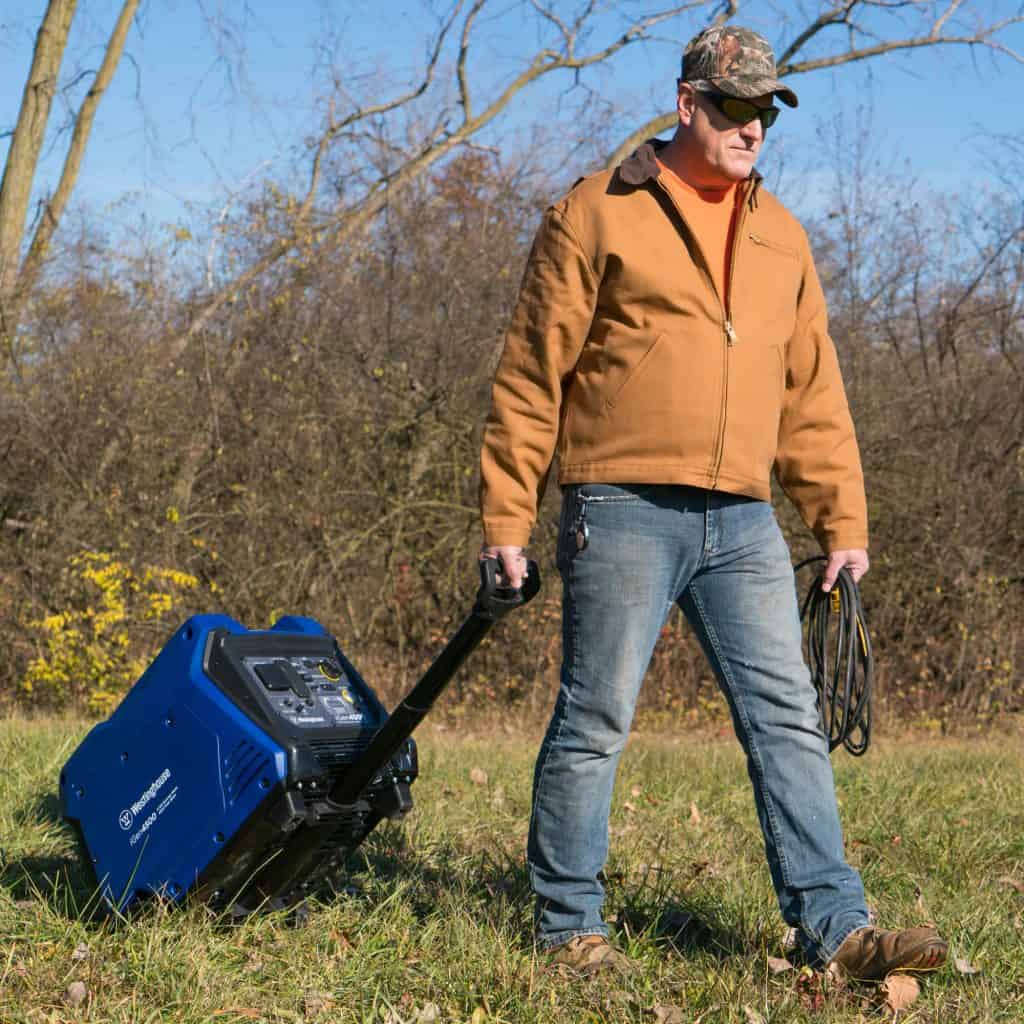
FAQs
With a 4000-watt generator, what can I power?
A standard refrigerator and freezer, a microwave, and a small air conditioner, as well as household or RV lights, require 4000 watts of running power.
If you’re planning to use your generator to power a group of appliances, combine their operating wattages together to make sure they’re under 4000 watts overall, and keep a watch on equipment with surge wattages to make sure your generator can take the initial load.
What is the decibel level of 4000-watt generators?
The noise produced by 4000-watt generators varies by model, but is generally between 50 and 70 decibels.
The quietest generators we tested, the Westinghouse iPro4200 and iGen4500, make just 52 decibels of noise, while the loudest generators, the Sportsman and DuroStar, make 69 decibels of noise.
Is it possible to use 110V and 220V at the same time?
In most cases, no.
Generators that switch between 110V and 220V can only run one voltage at a time, however a power converter may be installed on one of the outlets to convert 220V electricity to 110V power.
Conclusion
The Westinghouse iGen4500, the Champion Power Equipment 100302, and the Pulsar PG4000iSR are our three favorite 4000-watt generators on the market today.
All three generators are extremely fuel efficient and have long runtimes of 15, 17, and 18 hours, respectively, while producing relatively low noise levels.
Both the Pulsar and the Champion generators have RV-ready twist-lock outlets, making them ideal for road trips.
The Champion generator also has a three-year warranty, which is among the best in its class.
The Pulsar and Westinghouse generators, on the other hand, are mounted on wheels to make them more portable.
Because of its large 4500-watt surge output, incredibly quiet 52 dB engine, and inclusion of an LED screen on the front panel to monitor wattage consumption and duration, we believe the Westinghouse generator is the finest 4000-watt generator overall.

